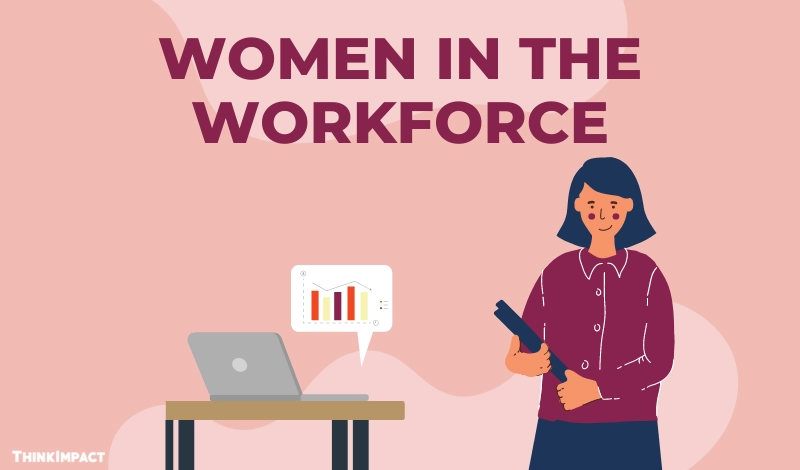Dr Shiba Shankar Pattayat, Kumar Priyanshu & Dr Savitha K L

India, the most populous country globally, is home to an estimated 1.5 billion as of the end of April 2023, which has surpassed China’s population (United Nations, 2023). With such a vast population, India’s human capital has the potential to be a tremendous asset if harnessed effectively. The key to unlocking this potential lies in the active participation of both males and females in the labor market. Their engagement will ultimately determine the country’s economic trajectory.
Transformations in India’s Employment Landscape
Over the long term, there has been a notable transformation in India’s employment landscape. In 2005, the nation experienced a worrisome trend of continuous decline in female employment levels (Meherotra and Parida, 2017). However, according to the PLFS 2022-23 reports, the situation has improved in the past six years significantly. In 2017-18, the work population ratio (WPR) stood at 46.8 percent, comprised of 71 percent male and 22 percent female participation. The latest data of PLFS 2022-23 indicates a substantial rise of WPR to 56 percent, with 76 percent male and 35.9 percent female participation. This change underscores a significant growth of female WPR in the Indian labor market, marking a noteworthy achievement.
Examining Sectors and Quality of Work for Women
To gain a deeper understanding of this transformation, it is crucial to examine the sectors where female employment has seen remarkable growth. We must also assess the quality of work based on the type of job contracts (in terms of years), level of education, and type of employment (SE, RE, and CL).
Women in India significantly contribute to economic welfare through substantial amounts of unpaid work at house, such as child-rearing and household tasks. Unfortunately, these contributions often remain unnoticed and unaccounted for in GDP figures. According to the Time Use Survey, in 2019, 81.2 percent of women were engaged as unpaid workers in India. On average, women devote twice as much time to household work and four times as much time to childcare compared to men (Duflo, OECD, 2012).

In India, societal norms tend to assign the primary responsibility of securing household income through employment to men, while women are expected to prioritize domestic care. This leads to gender disparities in employment outcomes, resulting in sectoral and occupational segregation. Education also plays a crucial role in shaping female labour force participation, women with lower education levels tend to have higher participation rates ( ILO 2014).
Women in economically disadvantaged households often need to supplement their household income through market work to meet basic subsistence needs (Dasgupta and Goldar, 2005, ILO 2014). This underscores the importance of accessible employment opportunities for women in low-income communities.
Promising Signs in the Service Sector
As per the past literature and the latest PLFS data, the service sector in India is a promising indicator of high-quality jobs and improved living standards for female workers for several reasons:
This sector predominantly attracts educated and skilled women, suggesting the potential for higher earnings and career advancement, as around 33.86 percent women in this sector as compared to other sector belong to the group of graduate and above qualification. The presence of written job contracts and a high percentage of regular jobs indicate more quality of employment in terms of formalization and job security and sustainability. PLFS 2022-23 found more than 37 percent of women have a written contract (more than 1 year) which was around 29 percent during 2017-18. It indicates, quality of female employment has been increasing in India. The service sector has consistently had the highest number of regular jobs, with nearly 67 percent of all jobs falling into this category, affirming stable employment opportunities. However, its low prevalence of self-employment (at 32 percent) and casual labor (at 1.97 percent, the lowest among all sectors), reinforces the perception of offering secure and quality employment opportunities. This is due to the instability associated with self-employment and casual labor, making the service sector a more attractive choice.
Notably, there has been a decrease in female employment with lower level of education (Upto primary) in the manufacturing sector, dropping from 75.54 percent in 2017-18 to 68.7 percent in 2022-23. This is a positive indication that female employment is declining with lower levels of education. It also suggests that the quality of female employment is very poor but still female is more in this sector. So, Govt needs to take the initiative to make better employment opportunities in this sector. However, it’s essential to acknowledge that there has been limited growth in the participation of the “graduate and above” category, indicating that highly educated women remain underrepresented.
Furthermore, we found quality of employment has been increasing in this sector in terms of number of job contracts. Women employment has increased to 11.22 percent from 2.6 percent during 2019-20 and 2022-23. The rise in long-term contracts suggests that women in manufacturing are experiencing more stable and secure job prospects, which is a promising development.
On the other hand, significant change observed is the decrease in the percentage of individuals working without written contracts. In 2018-19, a substantial 96.61 percent of the workforce operated without formal agreements, but by 2022-23, this figure had reduced to 78.6 percent. This decline indicates a shift towards greater formalization in job arrangements within the manufacturing sector. This trend is noteworthy as it suggests that more employees are now operating under clear, documented contracts, providing them with legal protection and clearly defined terms of employment. This formalization can have numerous benefits, such as improved working conditions and increased job stability.
Conclusion and Future Prospects
In conclusion, India’s burgeoning population presents a vast potential workforce, with a significant increase in female workforce participation in recent years. While there are positive developments, as Prime Minister Narendra Modi highlighted this positive change during the Kaushal Deekshant Samaroh in Delhi, This remarkable progress reflects the importance of various schemes and campaigns (including the New Education Policy and the establishment of additional medical colleges, IITs, IIMs, and various institutions and programs like Skill India, Pradhan Mantri Kaushal Kendra, Industrial Training Institute, DGT, PMKVY, SANKALP, NIPUN, Skill India International Center, NIESBUD, and Jan Shikshan Sansthan) focused on women empowerment in India, there is still work to be done in ensuring equal opportunities and quality employment for all. This shift in the workforce landscape is a positive sign for India’s economic future, but sustained efforts are required to capitalize on this potential fully.
Annexure
Table 1: Assessment of Quality of women employment in Manufacturing sector
| 2017-18 | 2018-19 | 2019-20 | 2020-21 | 2021-22 | 2022-23 | |
| By Level of Education | ||||||
| Illiterate | 75.54 | 75.09 | 68.68 | 69.65 | 69.07 | 68.7 |
| Secondary & | 19.41 | 20.06 | 23.1 | 23.86 | 23.99 | 24.74 |
| Graduate | 5.05 | 4.85 | 8.23 | 6.49 | 6.94 | 6.56 |
| By Job Contract | ||||||
| No written job contract | 91.43 | 96.61 | 94.76 | 78.8 | 79.18 | 78.96 |
| 1 year or less | 1.61 | 0.81 | 1.74 | 6.77 | 5.82 | 5.89 |
| More than 1 year to 3 | 1.88 | 1.03 | 0.9 | 4.58 | 5.41 | 3.92 |
| More than 3 years | 5.08 | 1.56 | 2.6 | 9.85 | 9.59 | 11.22 |
| By Type of Employment | ||||||
| Self Employed | 66.96 | 70.32 | 54.91 | 72.64 | 73.65 | 77.32 |
| Regular Job | 19.08 | 20.1 | 19.41 | 19.35 | 18.09 | 16.99 |
| Casual Labour | 13.96 | 9.58 | 25.68 | 8.01 | 8.26 | 5.69 |
Source: Authors’ estimation using PLFS data
Table 2: Assessment of Quality of women employment in Service Sector
| 2017-18 | 2018-19 | 2019-20 | 2020-21 | 2021-22 | 2022-23 | ||
| By Level of Education | |||||||
| Illiterate | 44.54 | 44.76 | 43.08 | 44.24 | 43.13 | 42.69 | |
| Secondary & | 21.9 | 21.78 | 22.56 | 23.73 | 22.46 | 23.46 | |
| Graduate | 33.55 | 33.46 | 34.35 | 32.03 | 34.41 | 33.86 | |
| By Job Contract | |||||||
| No written job contract | 66.71 | 75.41 | 74.54 | 61.66 | 59.03 | 55.19 | |
| 1 year or less | 3.8 | 3.78 | 4.55 | 6.73 | 7.39 | 7.54 | |
| More than 1 year to 3 | 3.63 | 3.16 | 2.77 | 4.09 | 5.15 | 6.4 | |
| More than 3 years | 25.87 | 17.65 | 18.14 | 27.52 | 28.44 | 30.87 | |
| By Type of Employment | |||||||
| Self Employed | 26.72 | 26.26 | 24.44 | 29.43 | 30.29 | 32.69 | |
| Regular Job | 70.02 | 70.84 | 59.57 | 67.28 | 67.02 | 65.34 | |
| Casual Labour | 3.26 | 2.89 | 15.99 | 3.29 | 2.69 | 1.97 | |
Source: Authors’ estimation using PLFS data
About the Author
1. Assistant Professor, Department of Economics, CHRIST (Deemed to be University), Yeshwanthpur, Bangalore.
2. MA Student, Department of Economics, CHRIST (Deemed to be University), Yeshwanthpur, Bangalore.
3. Assistant Professor, Department of Economics, CHRIST (Deemed to be University), Yeshwanthpur, Bangalore.
Opinions are personal.






























You make complex topics easy to grasp.